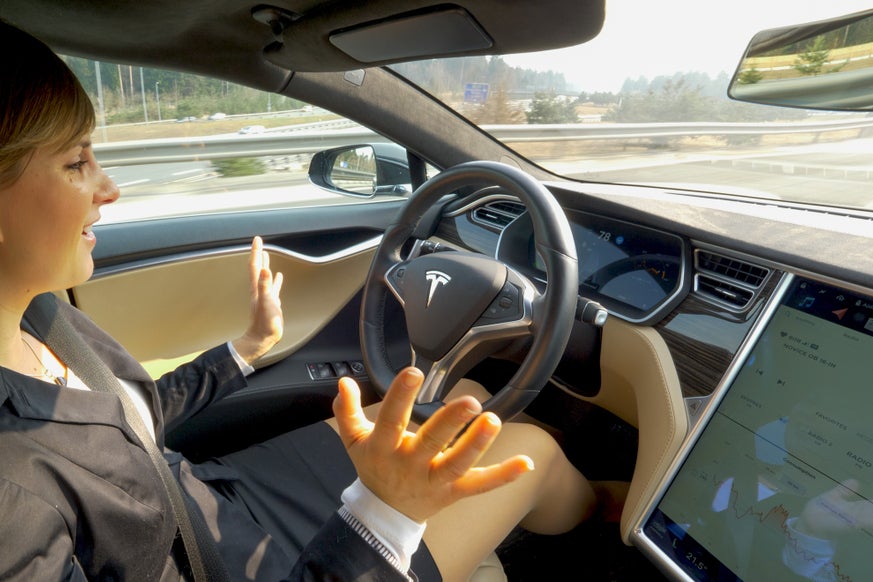Tesla’s FSD Faces Criticism: An Investor’s Perspective
In the ever-evolving landscape of autonomous driving technology, Tesla’s Full Self-Driving (FSD) capabilities have recently come under scrutiny from one of its vocal investors. Ross Gerber, a prominent figure in the investment community, has raised serious concerns about the functionality of Tesla’s FSD, particularly in relation to its integration with the new Cybertruck. He has described the system as “not usable,” prompting a broader discussion about the effectiveness of Tesla’s technology compared to competitors like Waymo, which is often praised for its superior autonomous driving capabilities.
Understanding Tesla’s FSD Technology
Tesla’s Full Self-Driving is an advanced driver-assistance system that aims to navigate a vehicle without human intervention. The system is designed to handle various driving tasks such as lane changes, navigating intersections, and parking. However, despite its ambitious name, FSD has faced criticism regarding its reliability and safety.
Investors like Gerber argue that the current state of FSD does not meet the expectations set by Tesla’s marketing promises. They contend that while Tesla has made significant strides in electric vehicle technology, it lags in the autonomous driving race. Critics point out that FSD is still classified as a Level 2 system, meaning it requires driver supervision, unlike Waymo’s offering, which is perceived as a more advanced Level 4 system capable of operating without human oversight in certain areas.
The Comparison with Waymo’s Technology
Waymo, a subsidiary of Alphabet Inc., has established itself as a leader in the autonomous vehicle sector. The company has developed a robust self-driving system that has been tested extensively in urban environments. Unlike Tesla’s FSD, Waymo’s technology utilizes a combination of lidar, cameras, and advanced algorithms, allowing it to navigate complex traffic situations with a high degree of reliability.
Key Differences Between Tesla’s FSD and Waymo’s Technology
- Technology Stack: Waymo employs a comprehensive sensor suite that includes lidar, which provides detailed 3D maps of the surrounding environment. Tesla, on the other hand, relies primarily on cameras and radar.
- Operational Design Domains: Waymo’s vehicles are designed to operate in specific geofenced areas, primarily urban settings, which allows for optimized performance. Tesla’s FSD is intended to function in a wider variety of conditions without such limitations.
- Testing and Validation: Waymo has conducted millions of miles of real-world testing and simulations to validate its technology. Tesla’s approach has focused more on software updates and real-world user data, which has raised concerns about safety.
Investor Concerns About Tesla’s FSD
Gerber’s criticisms of Tesla’s FSD resonate with a growing group of investors who are becoming increasingly concerned about the company’s long-term viability in the autonomous driving market. His remarks highlight a few key issues:
- Usability: Gerber emphasizes that the FSD feature is not user-friendly in its current form, which can deter potential buyers who expect a seamless driving experience.
- Safety and Reliability: The safety record of Tesla’s FSD has come under scrutiny, especially in light of several high-profile accidents involving Tesla vehicles operating under FSD. Investors are worried about the implications of these incidents on Tesla’s reputation and market share.
- Competitive Edge: As Waymo and other companies advance their own technologies, there are fears that Tesla’s FSD could fall behind, diminishing its competitive advantage in the electric vehicle market.
The Future of Tesla’s FSD
Despite the criticism, Tesla remains committed to improving its FSD technology. The company frequently rolls out software updates aimed at enhancing the system’s capabilities. Elon Musk, Tesla’s CEO, has often expressed optimism about reaching full autonomy, claiming that FSD will eventually outperform human drivers.
To address investor concerns, Tesla could consider the following strategies:
- Enhanced Testing: Increasing the scope and volume of real-world testing could help build confidence in FSD’s capabilities.
- Transparency: Providing clearer communication regarding the limitations and development status of FSD could help manage expectations and build trust with consumers and investors.
- Collaboration: Exploring partnerships with technology firms specializing in AI and sensor technology could bolster Tesla’s development efforts.
The Broader Implications of Autonomous Driving Technology
The debate surrounding Tesla’s FSD versus Waymo’s technology is emblematic of the larger conversation about the future of autonomous driving. As companies race to develop viable self-driving systems, the implications extend beyond just transportation; they touch on regulatory, ethical, and societal issues.
Regulatory and Ethical Considerations
As autonomous vehicles become more prevalent, regulators will face the challenge of creating frameworks that ensure safety without stifling innovation. Ethical considerations regarding decision-making in critical situations will also be paramount. These discussions will shape the future of autonomous driving technology and influence consumer trust.
Conclusion
As Tesla’s FSD faces criticism from investors like Ross Gerber, the company must navigate a complex landscape marked by competition from established players like Waymo. While Tesla has made significant progress in the electric vehicle sector, the performance of its FSD technology raises important questions about its future in the autonomous driving race.
To remain competitive, Tesla must address usability concerns, enhance safety measures, and communicate effectively with its stakeholders. The outcome of this internal and external scrutiny will not only impact Tesla but could also shape the trajectory of the entire autonomous vehicle industry.
In this rapidly evolving field, the race for true autonomy continues, and the stakes are higher than ever. Investors and consumers alike will be watching closely as Tesla works to refine its FSD technology and reclaim its position as a leader in innovation.
See more Future Tech Daily

